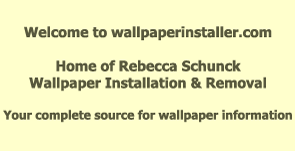|
 |
|||||||||||||||||
|
|
Switch Plate Covering
Printer Friendly Version
This page covers the guidelines for covering switch plates. The materials and techniques discussed work on most types of switch plates. Certain switch plates require specialized techniques and may require the services of a wallcovering specialist.
| 4. Fold over the top and bottom edges. |
 |
| 5. Pinch the corners of the switch plate as you fold over the left and right edges. This will create a sharp, hospital corner edge. |
 |
| 8. Cut a small "X" into each screw hole of the switch plate. |
 |